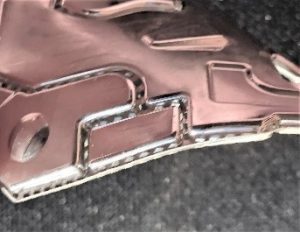Quick Contact
PCB Shielding Cans
PCB shielding cans, also known as board level shields or PCB EMI shields, are used for isolating circuits by creating a Faraday cage directly on the board that encloses the circuit to be shielded. There are many different types of board level shields but they can be thought of in two broad categories: one-piece and two-piece board level EMI shields. The term PCB shielding can typically refers to a one-piece shield that is soldered directly to the PCB, providing effective circuit board shielding.
The typical one-piece board level shield can consists of a stamped metal can (usually a rectangle) that is soldered directly to ground pads or through grounding vias on the PCB. There is a very wide range in the degree of soldering points between the shield and the ground plane of the PCB. For example, in the most extreme case, the shield can be continuously soldered around the perimeter of the can where it mates to the board. This essentially provides a complete Faraday cage and provides among the highest level of shielding effectiveness. Other methods include solder pads every 2-4mm around the perimeter and pins that are soldered on the back side of the board as these pins protrude through vias or through holes.
The advantages of one-piece board level shields is that they can provide a high level of shielding effectiveness and they can be among the lowest cost solutions.
Typical Shortcomings of One-Piece PCB Shielding Cans
The disadvantages can be numerous.
- If the shield can is installed during the reflow process, you lose the ability to inspect and/or rework the board after reflow.
- If the shield is installed after reflow, it can be a very costly and timely manual process, it can lead to de-soldering of adjacent components and it is not removable and replaceable without subjecting the board and components to additional heat, which always introduces risk.
- In order to ensure a robust solder joint between the one-piece shield and the PCB, there are stringent co-planarity requirements, which are difficult to achieve and become more challenging as the shield size increases.
PCB Shielding Can vs. EMI Shielding Can: Understanding the Difference
In summary, while both PCB Shielding Cans and EMI Shielding Cans serve the purpose of mitigating electromagnetic interference, they differ in scope and application. PCB Shielding Cans target localized shielding within a PCB, whereas EMI Shielding Cans encompass broader protection for entire devices or systems. The choice between the two depends on the specific shielding requirements of the electronic components or devices being used. The terms "PCB shielding can" and "EMI shielding can" are used interchangeably in the electronics industry.
Why SnapShot Technology is Superior to Traditional PCB Shielding Cans
SnapShot board level shields leverage some of the advantages of a one-piece pcb shield can, while overcoming the disadvantages.
- SnapShot is electrically connected to the ground plane through a solder spheres on a 1.8 – 2.0mm pitch, which provides excellent shielding effectiveness.
- SnapShot technology has true multi-cavity capability and is installed quickly and efficiently.
- SnapShot shields are installed AFTER reflow with NO ADDITIONAL HEAT.
- The small diameter solder spheres installed during reflow provide an unobstructed view for inspection and rework. Once that is complete, the shield is simply snapped into place.
- The SnapShot shield it is removable and replaceable.
- SnapShot shields are based on an engineered polymer that remains permanently flexible, which means there are ZERO requirements or issues with co-planarity. The SnapShot shield will flex to accommodate any differences in co-planarity between the PCB and the shield.

- Finally, SnapShot shields enable much greater design freedom than traditional one-piece shields. SnapShot shields are thermoformed in a mold that is unique to every application and the shield can take the shape of your circuitry rather than having to fit your circuitry into a square or rectangle shield.
- So, PCB real estate can be utilized to maximum efficiency.

